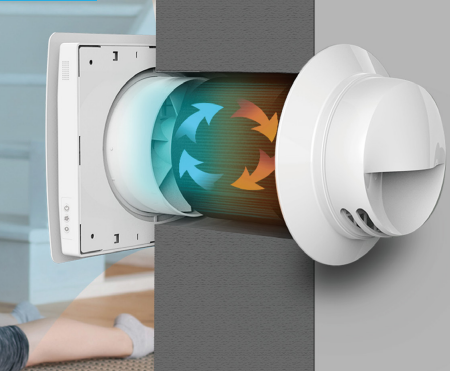Discovering the Advantages of Heat Recovery Ventilation for Power Efficiency in Residences
Heat Recovery Ventilation (HRV) systems supply house owners a functional approach to improving energy effectiveness. By reclaiming heat from outgoing air, these systems can significantly decrease cooling and heating prices. Additionally, they provide a stable supply of fresh air, enhancing interior air top quality and comfort levels. As home owners think about sustainable alternatives, recognizing the nuances of HRV systems becomes increasingly vital. What aspects should one review prior to making such a financial investment?
Understanding Heat Recovery Ventilation Equipments

Just How HRV Enhances Indoor Air Quality

Energy Financial Savings: The Monetary Benefits of HRV
Making the most of energy efficiency, heat recovery ventilation (HRV) systems offer considerable financial advantages for house owners. By recouping and reusing warmth from exhaust air, HRVs considerably lower heating and air conditioning prices. This technology can cause energy financial savings of up to 30%, depending on climate and use patterns. Homeowners often observe lowered utility costs quickly after installment, making HRVs an economically sensible investment over time. Furthermore, many regions provide motivations or rebates for energy-efficient upgrades, further enhancing the financial charm. As power rates remain to climb, the cost-effectiveness of HRVs becomes increasingly clear. In general, the consolidation of HRV systems not just promotes energy efficiency redirected here yet likewise adds to long-term monetary savings for households.
The Environmental Impact of Heat Recovery Ventilation
A considerable environmental advantage of heat recovery ventilation (HRV) systems hinges on their capability to decrease general power usage. By redeeming warmth from exhaust air and transferring it to incoming fresh air, HRV systems decrease the requirement for energy-intensive heating and cooling down approaches. This reduction in energy demand adds to decrease greenhouse gas discharges, as much less fossil gas is needed to preserve comfortable interior temperatures. In addition, HRV systems improve interior air quality by efficiently exchanging stagnant air with fresh exterior air, decreasing reliance on mechanical air conditioning systems that can damage the setting. In general, the application go to website of HRV systems supports sustainable living practices and lines up with worldwide efforts to battle environment change by advertising energy performance in household setups.
Choosing the Right HRV System for Your Home
Just how can homeowners guarantee they pick the right heat recovery ventilation (HRV) system for their needs? Initially, they ought to assess their home's size and design, as these variables affect air flow needs. Next off, examining the system's effectiveness rankings is crucial, as higher rankings show better efficiency and energy financial savings. Home owners should additionally take into consideration installment and maintenance costs, contrasting different brand names and designs for value. Furthermore, it is necessary to assess noise levels, as some systems operate more silently than others. Consulting with a/c experts can give tailored suggestions based on specific home problems. Analyzing user evaluations and service warranties can assist in making a notified choice, making sure that the selected HRV system properly improves interior air quality and power performance.
Often Asked Inquiries

How Typically Should I Tidy or Preserve My HRV System?
The frequency of cleaning or preserving a warm recuperation air flow (HRV) system usually depends upon use and environmental aspects. Typically, it is advisable to do upkeep every 6 months to assure peak performance and air quality.

Can HRV Equipments Help In Reducing Humidity Levels Inside?
HRV systems can successfully reduce indoor humidity levels by exchanging stagnant, humid air with fresh, drier air from outside. HRV Heat Recovery Ventilation. This process assists maintain a well balanced interior setting, boosting convenience and avoiding moisture-related issues
What Is the Life-span of a Regular HRV System?
The lifespan of a typical heat recovery ventilation (HRV) system varies, normally lasting in between 10 to 15 years. Regular upkeep can expand its efficiency and operational life, ensuring peak efficiency throughout its use period.
Are There Any Type Of Sound Interest In HRV Solutions?
Sound worry about HRV systems can arise, specifically from follower procedure. Several contemporary devices are designed to decrease audio degrees, guaranteeing they run quietly while maintaining performance, which deals with possible disturbances in living environments.
Can I Install an HRV System Myself, or Do I Need an Expert?
The private contemplated whether to mount the heat recovery ventilation (HRV) system directly or work with Click Here a specialist. Generally, while do it yourself installation is feasible, proficiency guarantees correct capability and conformity with regional building codes, enhancing system effectiveness.